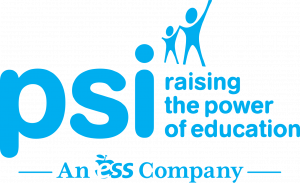Ohio ranks near top of states for school voucher spending
Ohio’s increase in school voucher spending this year for the EdChoice Expansion Program sets up the state to rank near the top nationally when it comes to taxpayer use of voucher dollars to attend private schools.
This is not only because of the increase in voucher money for each child but also because of an expansion in eligibility, allowing everyone to receive some form of help to pay for their children’s education outside of their home school district.
“Ohio is one of the states taking the lead in universal school choice,“ says Robert Enlow, president and chief executive of EdChoice, a national pro-school voucher nonprofit. “Other states are seeing a sea change in how we look at education and how we fund it going forward, and Ohio is on the tip of the spear for that.”
It’s that lead, however, that concerns critics of the voucher program, who say vouchers are taking money away from the public school system and only educating a small percentage of the school population.
Before the expansion, Ohio spent an estimated $241 per capita in the 2020-2021 school year, behind only Maine ($318), Wisconsin ($491) and Vermont ($700).
Vermont and Maine vouchers are primarily for students who live in areas where public schooling options are limited or non-existentand have to travel to another area, paid for using town tuition vouchers.
Wisconsin, like Ohio, has a mix of voucher programs, including income-eligible vouchers like Ohio’s EdChoice Expansion Program. But while Wisconsin also increased the value of its vouchers this year, it does not match Ohio’s expansion.
The number of applications approved by the state for students to be enrolled in Ohio’s voucher program nearly doubled this year, with more applications yet to be processed, preliminary data shows. Ohio has committed $240 million to the EdChoice Expansion program and is at risk of needing more.
School Voucher Programs in the US
Some states, like Ohio, have multiple voucher programs. This is because voucher programs cover a variety of needs.
While vouchers only provide a set amount of money to cover private school tuition, there are other voucher-adjacent programs states use to allow students to go to different schools.
This includes education savings accounts, or ESAs, which let parents use an allocation of public money to cover education expenses, including private school tuition and homeschooling costs. This is what states like Florida rely on for school choice.
Another method is a tax credit scholarship program, which allows individuals to receive tax credits for donations to organizations that provide private school scholarships, used in places such as Arizona and Pennsylvania.
When accounting for all of these types of school-choice programs, 32 states have an option for parents or guardians to receive help sending a student to a private school.
The EdChoice Scholarship expansion
Ohio’s new EdChoice Scholarship expansion provides students from public schools outside of Cleveland the opportunity to attend participating schools. All students are eligible for vouchers, though the size of the voucher is dependent on income. Cleveland has a separate voucher program called the Cleveland Scholarship Program.
Before the expansion, themaximum voucher amount was $5,500 for students in K-8 and $7,500 for grades9-12, with an average voucher amount being $5,789. With the expansion, the maximum amount is now $6,165 for students in K-8 and $8,407 in 9-12.
The state also expanded eligibilityfor the full amount to 450% of the federal poverty level, or $135,000 for a family of four, from the previous 250% of the federal poverty level. Those with higher incomes will receive prorated benefits.
Ohio’s rise in voucher use
This continues the exponential growth voucher programs have seen in Ohio, says Tanish Pruitt, a state policy fellow focused on education for the nonprofit advocacy organization Policy Matters Ohio.
By 2025, Pruitt predicts voucher allocations in the state budget are expected to cross the $1 billion threshold.






Leave a Reply
Want to join the discussion?Feel free to contribute!